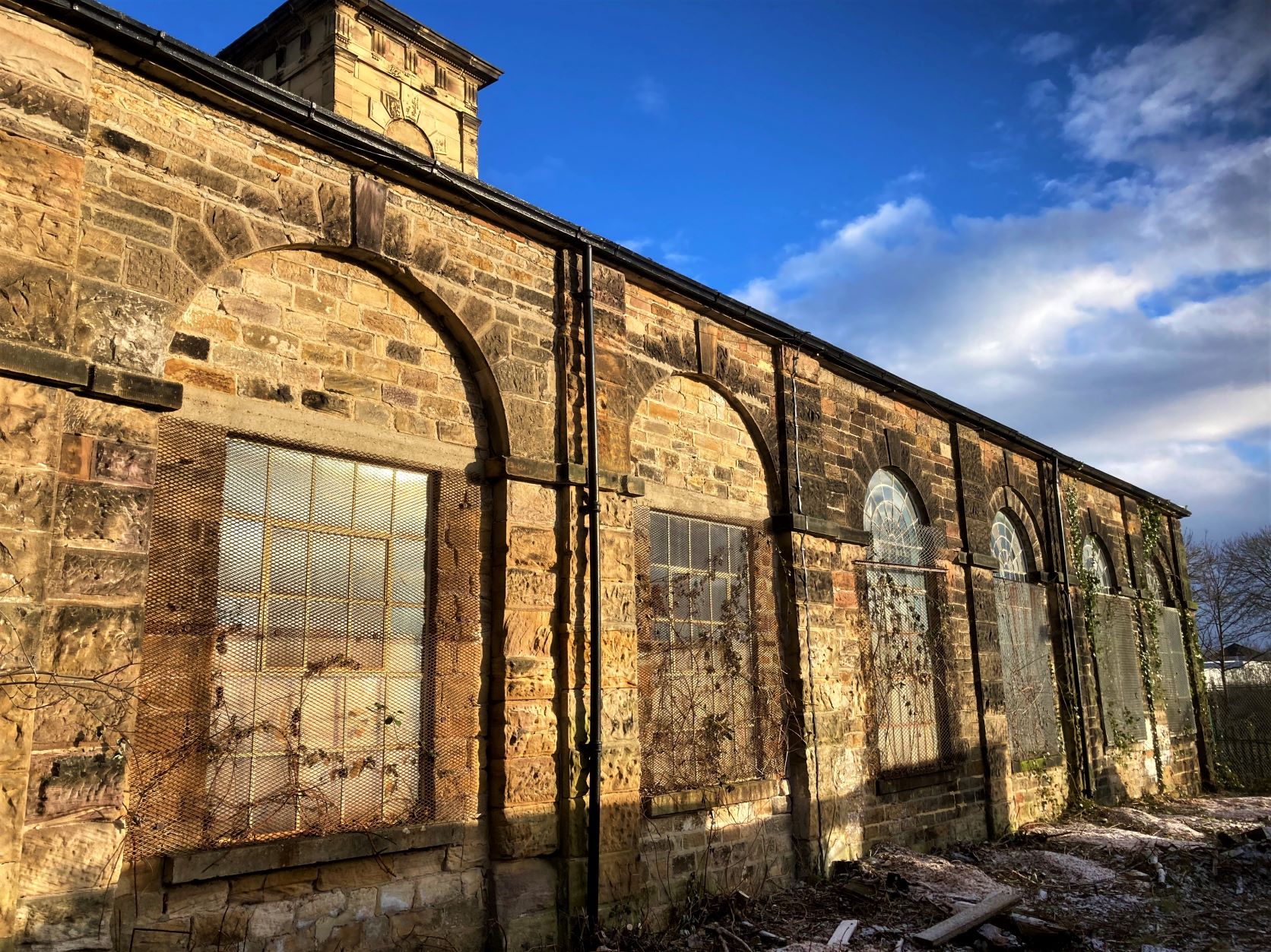Comments and advice for the proposed internal painting of the worlds Oldest Modern Railway Goods Shed
M Womersleys have been asked to advise on the use of Beeck waterglass paints to decorate the inside of the former Goods Shed at Darlington Head of Steam Railway Museum. The grade II* listed goods shed was built in 1833, as an early component of the Stockton & Darlington Railway, the world's first modern railway and was extended and altered 1839-40 by John Harris and was the main goods handling facility for the railway. The goods shed ceased to be the main point of goods handling for the Stockton & Darlington Railway and between 1870 and 1898, it was converted into a fire station. In 1951, the fire station was converted into a depot for the maintenance of railway vehicles. This high single storey building consisting of two parallel ranges of sandstone with classical detailing has been damaged by sulphate based salts, at the lower wall areas, both internally and externally, (in the areas tested inside, the levels were above 1600 mg of salt per litre), perhaps originating from the goods stored in the building, iron working and coke storage.
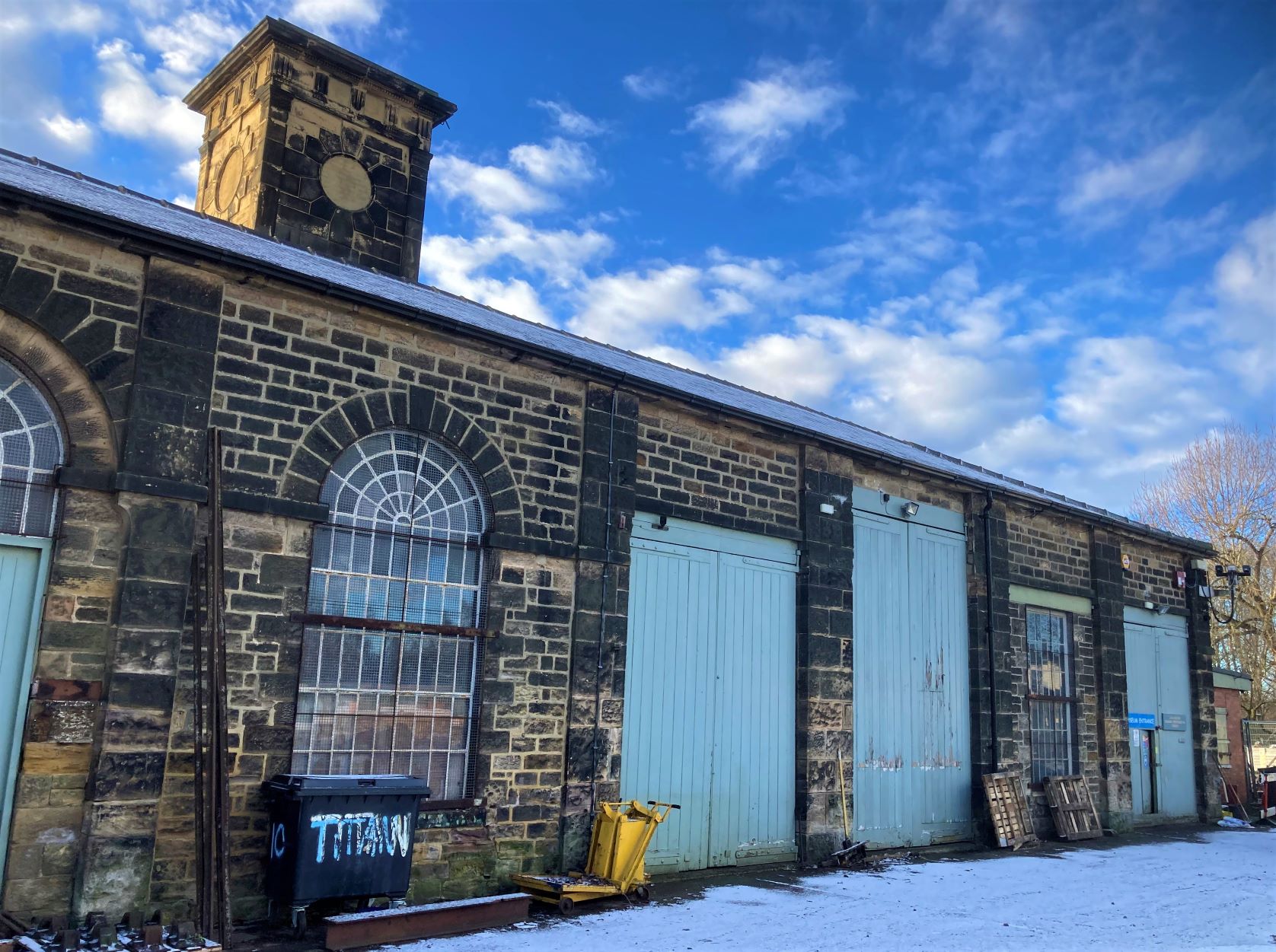
This means that any paint finish applied internally over these areas will fail unless excessive salt contamination is removed. This will be possible on the main internal cross wall by using clay poultices, after drainage has been improved below the current floor level. On the inside face of the external walls, it may not be possible to prevent the high levels of salts from causing further damage, as the salt will easily be put back into solution, in persistent wet weather conditions. These areas would be better lime washed every few years.
For the Carriage Works, circa 1853 by Joseph Sparkes for the Stockton & Darlington Railway Company, constructed of small coursed squared sandstone, now mostly rendered, with brick and freestone dressings under Welsh slate roofs, we have been asked our advice on the internal paint finishes .
With regards to the proposed external insulating lime renders, it should be noted that these will work well on the external walls, after the more modern failing cement render is removed, the brick and stonework has been cleaned and a 2-4 mm stipple coat has been applied. The problem areas to deal with on the east and west elevations are the slightly sloping step out below the windowsills and the step out of a plinth, which does not tie up fully with the layout inside the building, now the south range has been lowered by 1 m. We would suggest in these areas the application of a traditional roman stucco render, not inappropriate for an 1850’s building after new stone or roman stucco cast decoration has been introduced to kick the water off the building where these walls step out at these lower levels.
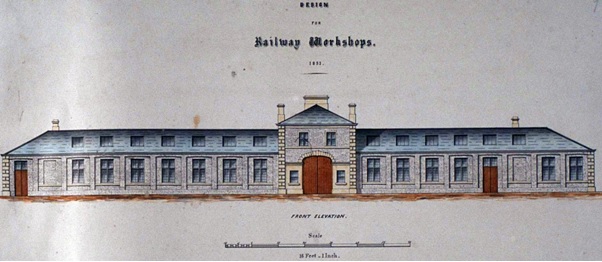
The rendered and stone eastern elevation of the carriage works. Source: (Beverley Kerr 24 September 2021 at 15:14 - ‘Design for Railway Workshops, 1853’ taken from page 9a of the Richard & Ross design book. Centre for Local Studies, Darlington Library).
Related Articles
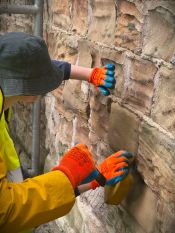
The steps members of the Waterton’s Wall restoration team, with support from Mark Womersley, have been following to consolidate, conserve and repair this historic wall that represents the successful efforts of Charles Waterton to preserve the wildlife that lived on his estate near Wakefield in West Yorkshire.
1. Fill deep voids behind the wall’s facing stones with deep pointing work. The works involve …
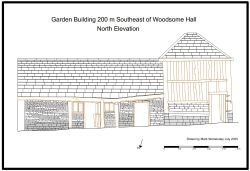
Mark spent a day recording a historic timber-framed garden building at Woodsome Hall
Mark Womersley, as part of his voluntary work with the Yorkshire Vernacular Buildings Study Group, spent…
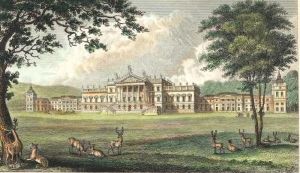
M Womersleys were delighted to offer a day of tutoring to those who attended the Wentworth Woodhouse Working Party
M Womersleys were delighted to offer a day of tutoring to those who attended the Wentworth Woodhouse…
